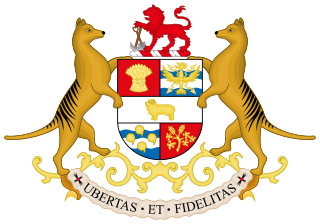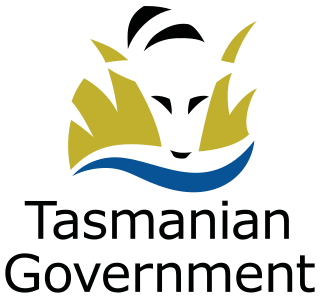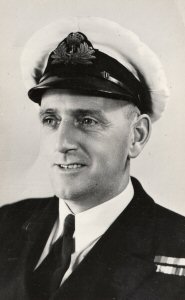
The House of Assembly, or Lower House, is one of the two chambers of the Parliament of Tasmania in Australia. The other is the Legislative Council or Upper House. It sits in Parliament House in the state capital, Hobart.

The Parliament of Tasmania is the bicameral legislature of the Australian state of Tasmania. It follows a Westminster-derived parliamentary system and consists of the Governor of Tasmania, the Tasmanian House of Assembly, and Tasmanian Legislative Council. Since 1841, both Houses have met in Parliament House, Hobart. The Parliament of Tasmania first met in 1856.

The Government of Tasmania, also referred to as the Tasmanian Government, is the executive authority of the state of Tasmania, Australia. The leader of the party or coalition with the confidence of the Tasmanian House of Assembly, the lower house of the Parliament of Tasmania, is invited by the Governor of Tasmania to form the Government of Tasmania. The head of the Government is the Premier of Tasmania.

The Tasmanian state election, 1972 was held on 22 April 1972 in the Australian state of Tasmania to elect 35 members of the Tasmanian House of Assembly. The election used the Hare-Clark proportional representation system — seven members were elected from each of five electorates.

The 1912 Tasmanian state election was held on Tuesday, 30 April 1912 in the Australian state of Tasmania to elect 30 members of the Tasmanian House of Assembly. The election used the Hare-Clark proportional representation system — six members were elected from each of five electorates.

The 1919 Tasmanian state election was held on 31 May 1919 in the Australian state of Tasmania to elect 30 members of the Tasmanian House of Assembly. The election used the Hare-Clark proportional representation system — six members were elected from each of five electorates.

The 1922 Tasmanian state election was held on 10 June 1922 in the Australian state of Tasmania to elect 30 members of the Tasmanian House of Assembly. The election used the Hare-Clark proportional representation system — six members were elected from each of five electorates.

The 1931 Tasmanian state election was held on 9 May 1931 in the Australian state of Tasmania to elect 30 members of the Tasmanian House of Assembly. The election used the Hare-Clark proportional representation system — six members were elected from each of five electorates. For the first time, voting was compulsory, resulting in a high voter turnout.

The 1937 Tasmanian state election was held on 20 February 1937 in the Australian state of Tasmania to elect 30 members of the Tasmanian House of Assembly. The election used the Hare-Clark proportional representation system — six members were elected from each of five electorates.

The 1946 Tasmanian state election was held on 23 November 1946 in the Australian state of Tasmania to elect 30 members of the Tasmanian House of Assembly. The election used the Hare-Clark proportional representation system — six members were elected from each of five electorates.

The 1955 Tasmanian state election was held on 19 February 1955 in the Australian state of Tasmania to elect 30 members of the Tasmanian House of Assembly. The election used the Hare-Clark proportional representation system — six members were elected from each of five electorates.

The Tasmanian state election, 1956 was held on 13 October 1956 in the Australian state of Tasmania to elect 30 members of the Tasmanian House of Assembly. The election used the Hare-Clark proportional representation system — six members were elected from each of five electorates.

The Tasmanian state election, 1959 was held on 2 May 1959 in the Australian state of Tasmania to elect 35 members of the Tasmanian House of Assembly. The number of members were increased from this election from 30 to 35. The election used the Hare-Clark proportional representation system — seven members were elected from each of five electorates.
The Electoral district of Zeehan was a single-member electoral district of the Tasmanian House of Assembly. It was based in the mining town of Zeehan in the West Coast region of Tasmania.
The Electoral district of Waratah was a single-member electoral district of the Tasmanian House of Assembly. It centred on the town of Waratah in western Tasmania.
The Electoral district of Lyell was a single-member electoral district of the Tasmanian House of Assembly. It included the towns of Queenstown and Strahan in the West Coast region of Tasmania.
The electoral district of Central Launceston, sometimes referred to as Launceston Central, was a single-member electoral district of the Tasmanian House of Assembly. It was based in the centre of Launceston, Tasmania's second city, and its inner suburbs.
The electoral district of Queenborough was an electoral district of the Tasmanian House of Assembly. It was based in the southern suburbs of Tasmania's capital city, Hobart, in particular Sandy Bay, and surrounding districts such as Cascades, Taroona and Kingston.

Peter Carl Gutwein is an Australian politician. He has been a Liberal Party member of the Tasmanian House of Assembly since 2002 representing the seat of Bass. On 20 January 2020, he replaced Will Hodgman as leader of the Liberal Party in Tasmania, and was sworn in as 46th Premier of Tasmania later that day.
The Australian Labor Party , commonly known as Tasmanian Labor is the Tasmanian branch of the Australian Labor Party.
This page is based on this
Wikipedia article Text is available under the
CC BY-SA 4.0 license; additional terms may apply.
Images, videos and audio are available under their respective licenses.












